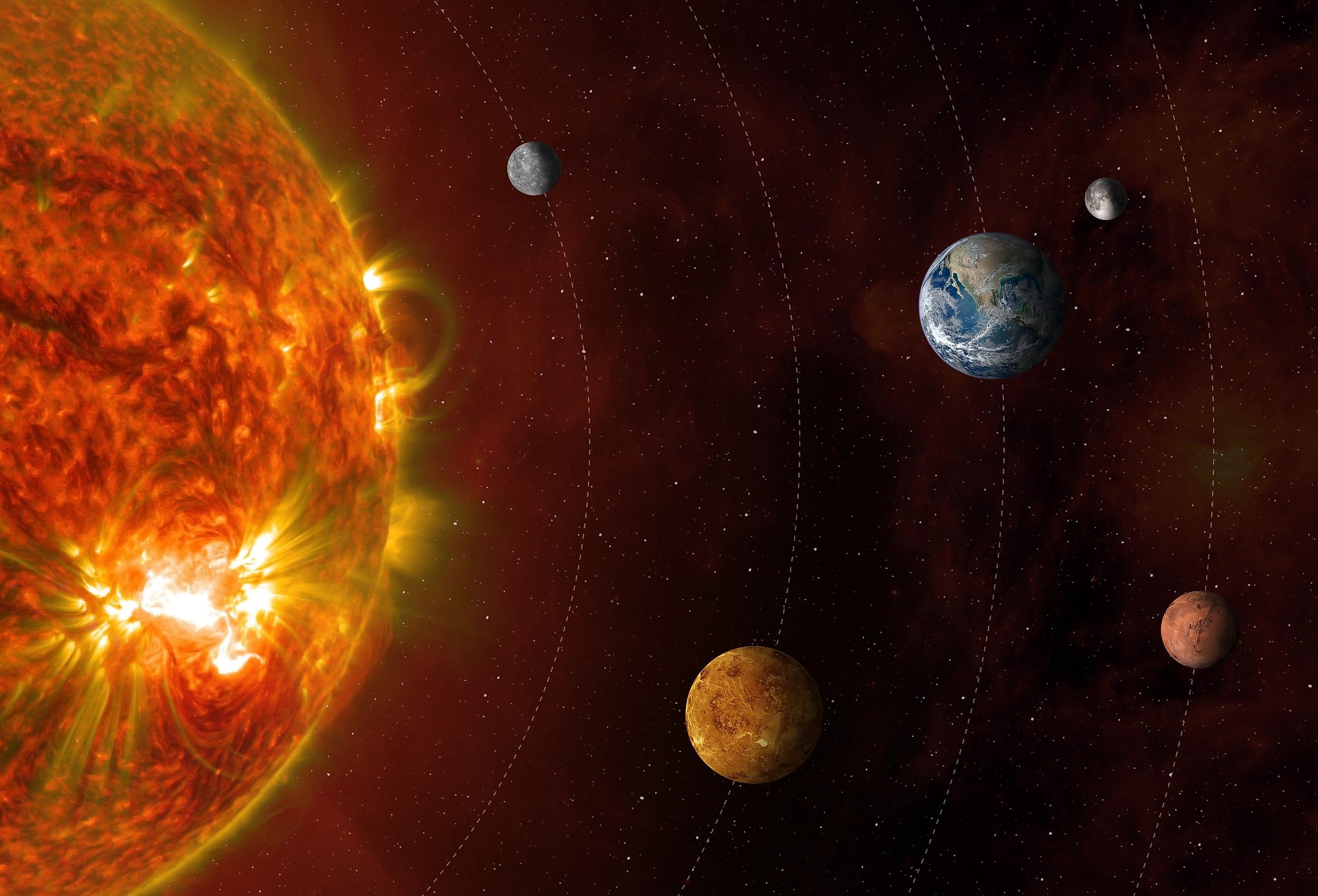
Why Does Venus Rotate Slowly Despite Being So Close to the Sun?
Venus and Earth are often called sister planets because of their similarities, some of which are atmospheric density and topography. However, there are some key differences between them. Unlike Earth, Venus spins in the opposite direction to most planets in our solar system. Moreover, Venus is much closer to the Sun than the Earth, which has numerous implications for the speed at which Venus rotates. Consequently, Venus rotates very slowly in the opposite direction to that of the Earth.
Venus' Rotation Facts
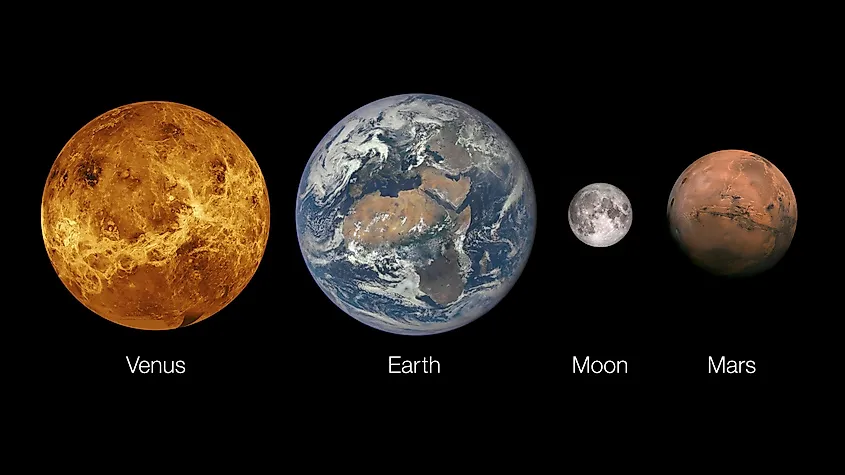
Unlike most planets, Venus rotates east to west. This is unusual and opposite to the way most planets rotate, including Earth. Venus's rotation is also incredibly slow, especially compared to nearby planets Earth and Mars. On Earth, one full rotation of the planet on its axis is a day. Earth takes 24 hours to rotate completely on its axis. For Venus to complete one rotation on its axis, it takes 243 Earth days.
However, a year goes by faster on Venus. A year is how fast a planet takes to rotate completely around the sun. It takes Earth 365 days to rotate around the sun. A year on Venus is 225 Earth days. This creates a strange situation where a day is longer than a year on Venus.
Since a day and a year are relatively similar in time on Venus, the concept of a day differs from a day on Earth. On Venus, the sun rises every 117 Earth days. This means it rises twice a year. Since Venus is rotating opposite to Earth, the sun also rises in the west and sets in the east.
Gravitational Forces at Play
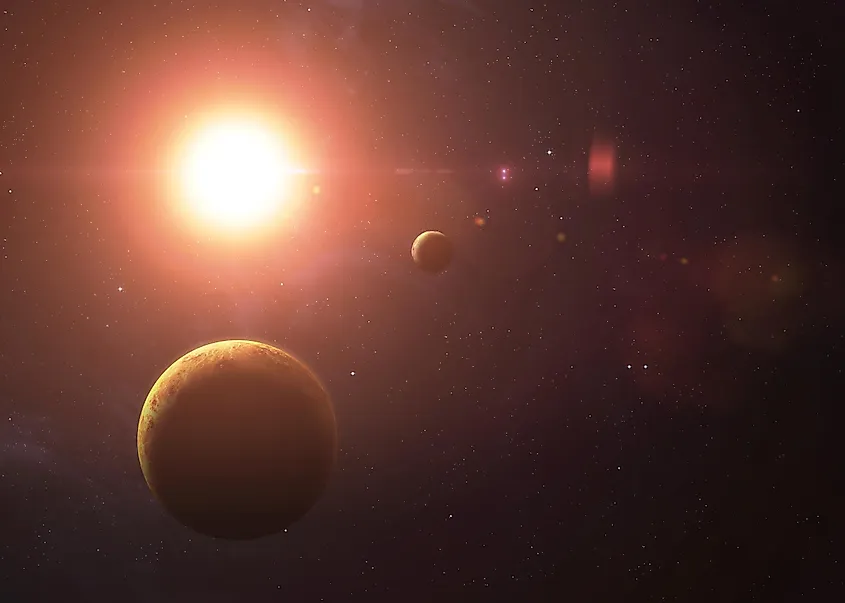
There are a couple of theories as to why Venus doesn't spin that much. The first is a phenomenon known as tidal locking. This is when the gravity of a large object in space keeps a smaller object from spinning. If the atmosphere on Venus wasn't so fast-moving, scientists estimate it would be stuck in place. Researchers have a keen interest in Venus's atmosphere, considering the role it has in keeping the planet in motion.
Topographical Influences
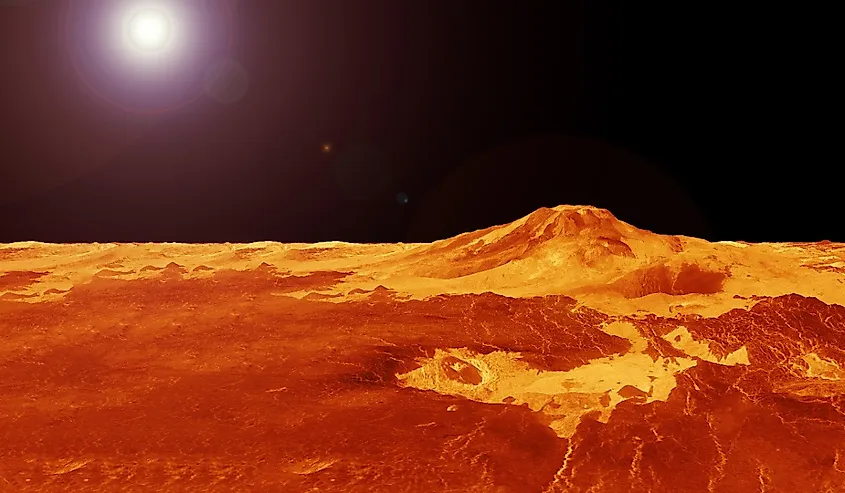
Venus's geographical features, such as mountains, also influence the planet's ability to rotate. Researchers observed a bowl-shaped atmospheric structure from images of the planet from the Akatsuki mission in 2015. Researchers believe the structure was a fast-moving mountain wave. The wind flowing over the mountain creates waves. Mountain waves cause Venus to spin at varying speeds because of the force generated from the different directions of the wind flowing against the mountain.
Atmospheric Dynamics
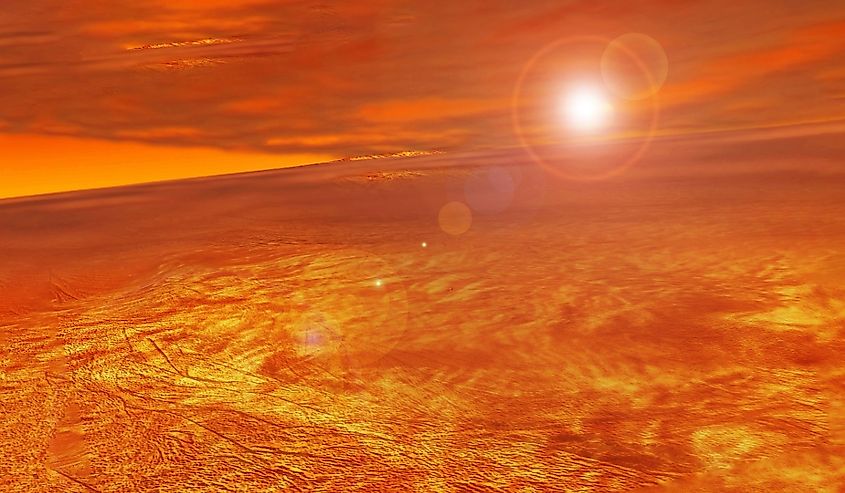
As a result of the planet's slow rotation, Venus has a sweltering climate. The average temperature on the planet is around 900 degrees Fahrenheit. This is hot enough to melt some metals, such as lead.
Most of the atmosphere of Venus is composed of carbon dioxide, small parts of nitrogen, and clouds of sulfuric acid. The dense air on Venus makes the small parts of the atmosphere composed of nitrogen amplified. The mass of the small traces of nitrogen is four times the amount found on Earth. The composition causes a greenhouse effect, making the planet's surface extremely hot. The greenhouse effect is a phenomenon where gases such as carbon dioxide trap heat in a planet's lower atmosphere.
Historical Discovery
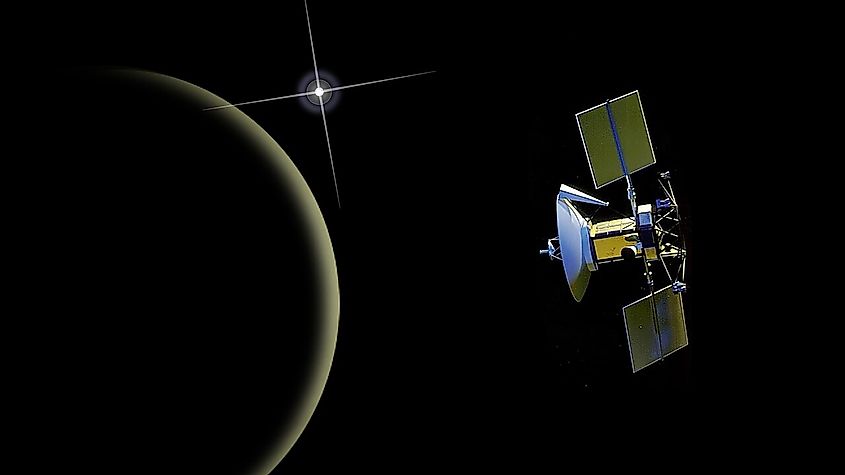
Human interest in understanding Venus's rotation isn't new. One of the earliest radar observations measuring the planet's rotation was in 1963. The mission found that the planet rotated at a rate of 243 days in retrograde rotation. Other missions found Venus's rotation varied by about 6 minutes. In 1991, an extensive mission with the Magellan spacecraft orbited for 487 days, creating an extensive map and finding the correct number of days for Venus's rotation. The finding was that Venus took 243.0185 days to make it around the Sun. Later, researchers said the variability in rotation was probably due to atmospheric drag and solar tidal torques.
Implications and Future Research
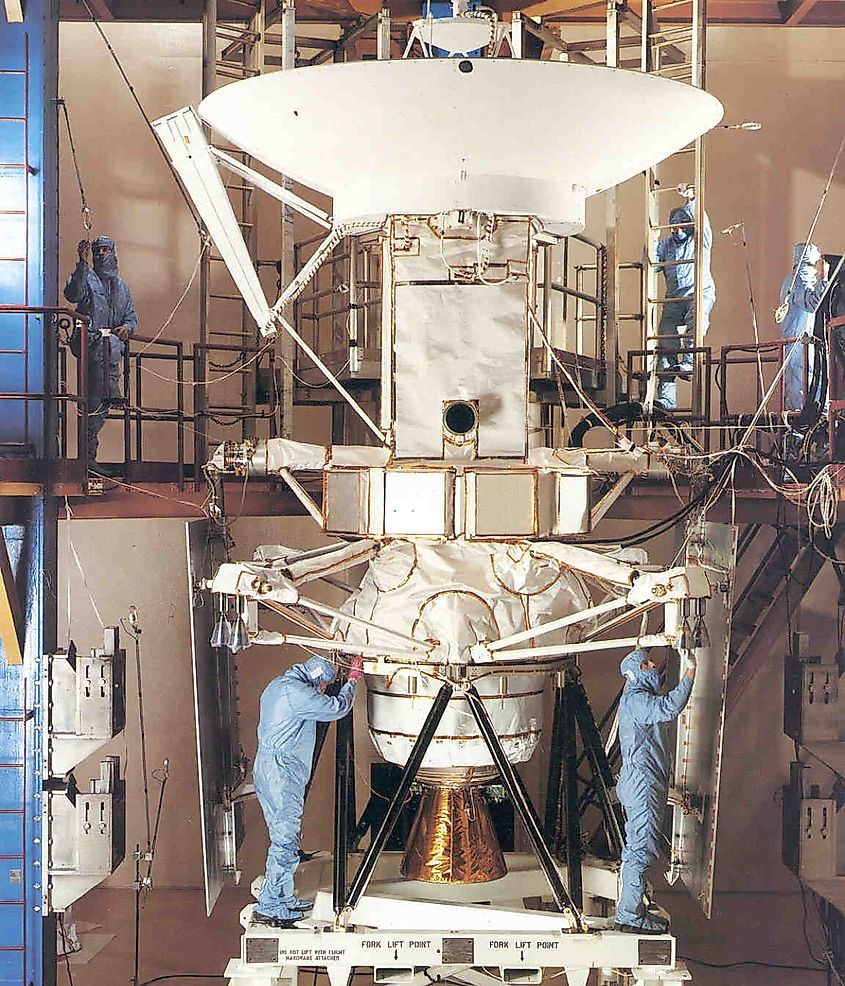
There have been over 40 missions to Venus, with current missions in progress and scheduled. In the future, as scientists pursue lander missions to Venus, understanding the rate of Venus's rotation is important. Uncertainties in the planet's rotation could lead to mishaps on a mission, such as missing a landing site. To try to better understand Venus's rotation, John Chandler and a team of scientists undertook a big analysis in 2019, analyzing 29 years of Earth-based radar observations of Venus. The observations are from 1988 to 2017. In their analysis, they found that the average day in Venus was 243.0212 +-00006 days.
Conclusion
Ultimately, there are several reasons why Venus rotates so slowly. The planet's slow rotation could be due to tidal locking that Venus's atmosphere prevents. Topographical influences, such as mountain waves, also impact the planet's rotation speed. Over the years, analysis of photographs has helped researchers develop these theories about Venus's rotation. In the future, as space exploration continues, humans might make more discoveries that help us better understand the planet.











